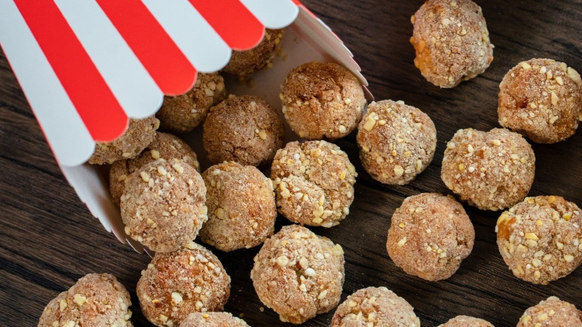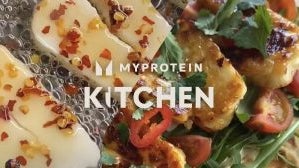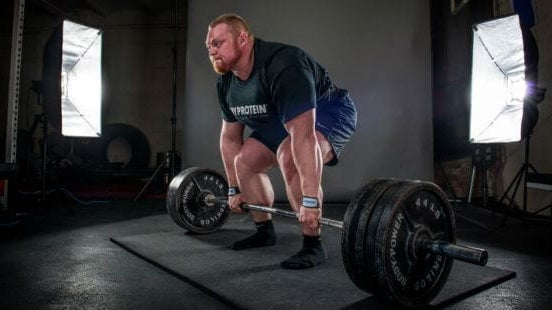Chalk, Sweat and Tears
Dust off your lifting straps, leave your ego at the door & find peace in the squat rack because it's time to put in the sweat-equity & pay your dues to the gains gods. Welcome to 5x5 training.
Nothing has further highlighted to me the importance of rest, recovery and nutrition than 5x5 training; 3 days a week that will build your body brick by brick, burn fat & develop lean muscle, power and strength.
The principles are simple and have to be respected, 5 sets of 5 reps for 3 compound movements, 3 times per week. Now I know what your thinking, you only train 3 times per week, so what do you do on the other 4 days? Simple, you rest.
Less Is More
Ever heard the saying less is more? Well, this is where that applies, you see, compound exercises are both multi muscle and joint movements that are extremely taxing on the body and central nervous system, especially when performing fewer reps with a heavier load like in 5x5 training. Therefore, you have to give your body enough time to recover, at least one day between workouts or you will limit your ability to gain strength and build dense lean muscle.
Now, obviously there is a limit to how strong you can get and there is a method to the madness, but ultimately you will find yourself eating more, training less, getting stronger, bigger and leaner. Not bad for 3 days of hardcore workouts a week right?
Another benefit of 5x5 training is that eventually, you will be able to work with increased load in a hypertrophy rep range (8-12 reps) that is directly correlated to increased muscle size.
Ok, so now that I have exposed you to training method of the Incredible Hulk himself, I suppose I better enlighten you as to how it works. Let's say our training days are Monday, Wednesday and Friday, you will follow 2 workouts in the form of A & B.
Workout A
Barbell Squats 5x5 Bench Press 5x5 Barbell Row 5x5
Workout B
Barbell Squats 5x5 Barbell Overhead Press 5x5 Deadlifts 1x5
So your week would look like this:
Monday - A Wednesday - B Friday - A
You read it right, you squat every workout, but just remember, the tree with the biggest trunk also has the biggest canopy!
Loading Phase
As I mentioned above, there is a method to the madness and that is the 12-week loading phase, you begin with 50% of your maximum weight for 5 sets of 5 reps; for example, I can squat 110kg for 5 sets, so my starting weight would be 55kg. I'm hoping by now you have recovered from the shock of squatting 3 times per week and the 50% starting weight has restored your confidence, but that weight will soon build and before you know it you will be repping 2-3 plates a side for 5 sets of 5 reps. Each workout you increase the working weight by 2.5kg, a total of 7.5kg per week, 7.5kg x 12 = 90kg, so in 12 weeks time, I should by rights be able to squat 145kg for 5 sets of 5 reps.
This 2.5kg incremental weekly progression will apply to each compound movement, except for deadlifts, where you will only perform 1 set of 5 reps on workout B and increase your weight by 5kg per week. Why only 1 set I hear you ask? Because squats and deadlifts use a similar set of muscles and to perform both exercises at maximum effort when you reach weeks 8-12 would burn you out. This isn’t a sprint, it’s a marathon, it’s about training smart and eating and resting smarter.
During weeks 1-6 when the weight is lighter and if you're anything like me, you're thinking “I could have done more”, you can add in 3 assisting exercises for 3 sets of 8-10 reps; however, they must be either body weight or a compound barbell movement. For example, for workout A you might want to add bodyweight dips, close grip chest press and skull crushers and for workout B you could add chin-ups, calf raises and pull-ups. As soon as your prioritised compound exercises become a struggle, drop the assistance exercises like a bad habit and save all your available energy for your weight increase each workout, trust me, you will need it!
Rest Periods and Nutrition
In terms of rest, for the lighter weights you can take as little as 90 seconds rest, but as soon as that weight quite literally becomes a burden upon your shoulders, take 3-5 minutes’ recovery between each set. This is important as your CP (creatine phosphate) and the central nervous system requires a longer rest period to recover and on that note, I personally like to take 5g of Myprotein creapure creatine monohydrate, both pre and post workout to maximise my working capacity at this demanding intensity.
Now when it comes to nutrition, you need to both fuel and nourish your body with an adequate amount of calories and quality macronutrients (proteins, carbohydrates and fats) to maximise your performance and recovery. I personally like to increase my maintenance calorie intake based on my TDEE (total daily energy expenditure) by 10% in weeks 1-4, 15% in weeks 5-8 and by 20% in weeks 9-12, this calorie increase is based on the higher demand of energy required as you progress through the programme; it also ensures I don’t go into a dramatic 20% surplus when I begin that will likely cause me to gain unnecessary body-fat. When push comes to shove, you need to listen to your body, if your hungry then eat, but just be smart with what you're shovelling into your mouth.
I tend to break my calorie intake into a 40/40/20 split, 40% total calories coming from protein, 40% total calories coming from carbohydrates and 20% total calories coming from fats. Remember, both protein and carbohydrates equate to 4 calories per gram, whereas fats are 9 calories per gram, so in terms of the energy we receive from fats in comparison to protein and carbohydrates, a 40P/40C/20F split, is actually very balanced. Your 40% protein intake will also ensure you are consuming approx. 1.5-2g of protein per lb of body mass, which is ideal for promoting lean muscle growth, repair and recovery.
Carbohydrates are essential for both maximising our performance and replenishing muscle glycogen post-workout; I tend to stick to low GI starchy carbohydrates such as oats, sweet potato and whole grains, combined with fibrous carbohydrates such as green leafy vegetables throughout the day to ensure my blood sugar levels remain stable and I feel fuller for longer. I only tend to consume high GI carbohydrates first thing in the morning for some wake-up energy and then post-workout when an insulin spike is beneficial to drive both proteins and glucose into the muscles to replenish muscle glycogen and start the repair process.
Fats are also essential for nourishing your body and I try to get a variety of healthy fats into my diet which includes avocado, nuts, eggs and oily fish. I aim for 3 whole eggs a day, especially whilst following the 5x5 programme; that’s because a study by Texas A&M University showed that subjects eating 3 whole eggs a day whilst following a weight lifting exercise programme over the period of 12 weeks gained twice as much muscle mass and muscle strength in comparison to subjects eating no eggs or just one whole egg per day. Despite popular belief, research has found that the natural cholesterol in eggs does not lead to cardiovascular disease, in fact, eggs are probably one of the most available and affordable super foods that are slipping under the radar. Rich in vitamin D, omega 3 fatty acids, selenium and protein, eggs are a highly nutritious whole food that I believe should be a staple part of your daily diet.
Last but not least is sleep, remember, we grow outside of the gym, not whilst we are beating ourselves to a pulp under the bar. You want to aim for 7-9 hours of deep sleep each night which is when natural human growth hormone levels are secreted at optimal levels, similar to the high levels secreted during intense exercise. I would also consume a slow digesting source of protein pre-bed such as Greek yoghurt or micellar casein to drip feed your muscles with a steady supply of protein synthesis promoting amino acids.
So there we have it, the 12-week workout that allows you to eat more, train less and yet burn fat, build strong dense muscle and help you break plateaus and beat PB’s.
P.S. if the HULK comes knocking, you didn’t get this workout from me!







